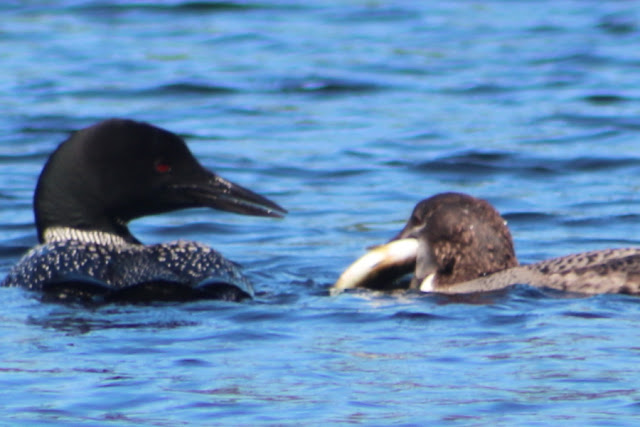Has anyone noticed these little seed-like objects on the ground under oak trees, or perhaps on a dock that's under an oak tree? They are about a quarter of an inch long.
 |
| Is this a seed? |
That's where I saw them starting over a week ago, and had no idea what they were. Looking kind of like of a pointy corn kernel, I thought they might be a seed from some nearby tree. But then I received an email from the UNH Extension Service (you can sign up to get these sent to you - they are full of timely and useful information for gardeners) which included a picture of these very items - talk about timely! Here's a picture of an acorn I found with the tell-tale mark of the acorn pip gall wasp.
 |
| Red oak acorn with hole from the gall. |
That gave me a name and a starting point to figure out what they are all about. It turns out that they are a type of gall, other types of which I have mentioned before (June 2014 and June 2016). These galls are from the acorn pip gall wasp (Callirhytis operator) which has a strange life cycle. The gall is the home of a tiny larva which was placed in a developing acorn last year. I split one gall open; inside was an even tinier, round, hard shell. Cutting that open I found the little grub-like larva.
 |
| A larva in the palm of my hand. |
 |
| The larva is about 3 millimeters long. |
Left alone, this larva would emerge in the spring as an adult wasp. But what's interesting is every one of them will be female. These females don't need to mate - they just go and lay their eggs in a flower of an oak tree. Then in mid-summer those eggs hatch and a second batch of adult insects emerges, and these are both male and female. These guys mate, and the females go lay their eggs in a developing acorn (that actually began growing the prior year). The eggs cause the tree to form the galls which are now laying on the ground under our oak trees. It's a fabulous evolutionary defense mechanism - the insect makes the tree build a shield around the egg which protects it from predators. [Ref: Bug Tracks - there is more information at that link.] Though I didn't find any galls still in an acorn, I did find acorns from which the gall had been present as shown by the small hole just under the cap.
 |
| The hole left after the pip falls out. |
In the process of figuring this all out I learned that it takes two seasons for an acorn to grow and mature - I never knew that.
It certainly doesn't take that long for loons to mature, as Harley and Davidson are growing by leaps and bounds now.
 |
| Harley appears to be well over half the size of its parents. |
Well, actually, it does take that long, and longer. Our twin loons - if they survive the summer - will spend two years out on the ocean before they return to fresh water lakes, and may not mate for another three or four years.
I can understand how they are growing so fast when I saw the size of the fish they are being fed now. On one fishing trip this week a parent came up with a fish so large I thought surely the parent would eat it itself.
 |
| Dinner coming up! |
But no. After tiring the fish out, over to a chick it swam and passed the fish over.
 |
| "Think you can handle this one junior?" |
And the chick had no problem swallowing the beast right down its stretched-out throat.
 |
| "I'll give it a try" |
 |
| "Now chew your food carefully" |
 |
| "No problem dad" |
The other chick looked on enviously waiting for its turn. Seems like a fish that large could nourish one of the twins for a whole day.
 |
| "Find me a big one mom!" - "I'm looking..." |
One chick has been exhibiting teenage behavior, straying far away from its parents for long periods of time, resulting in numerous concerned observers (myself included) when seeing the parents and only one chick. But as of yesterday, both chicks are still intact. So far things are looking good for the Wicwas loon family.
And finally, oh no, can this be happening already?

No comments:
Post a Comment